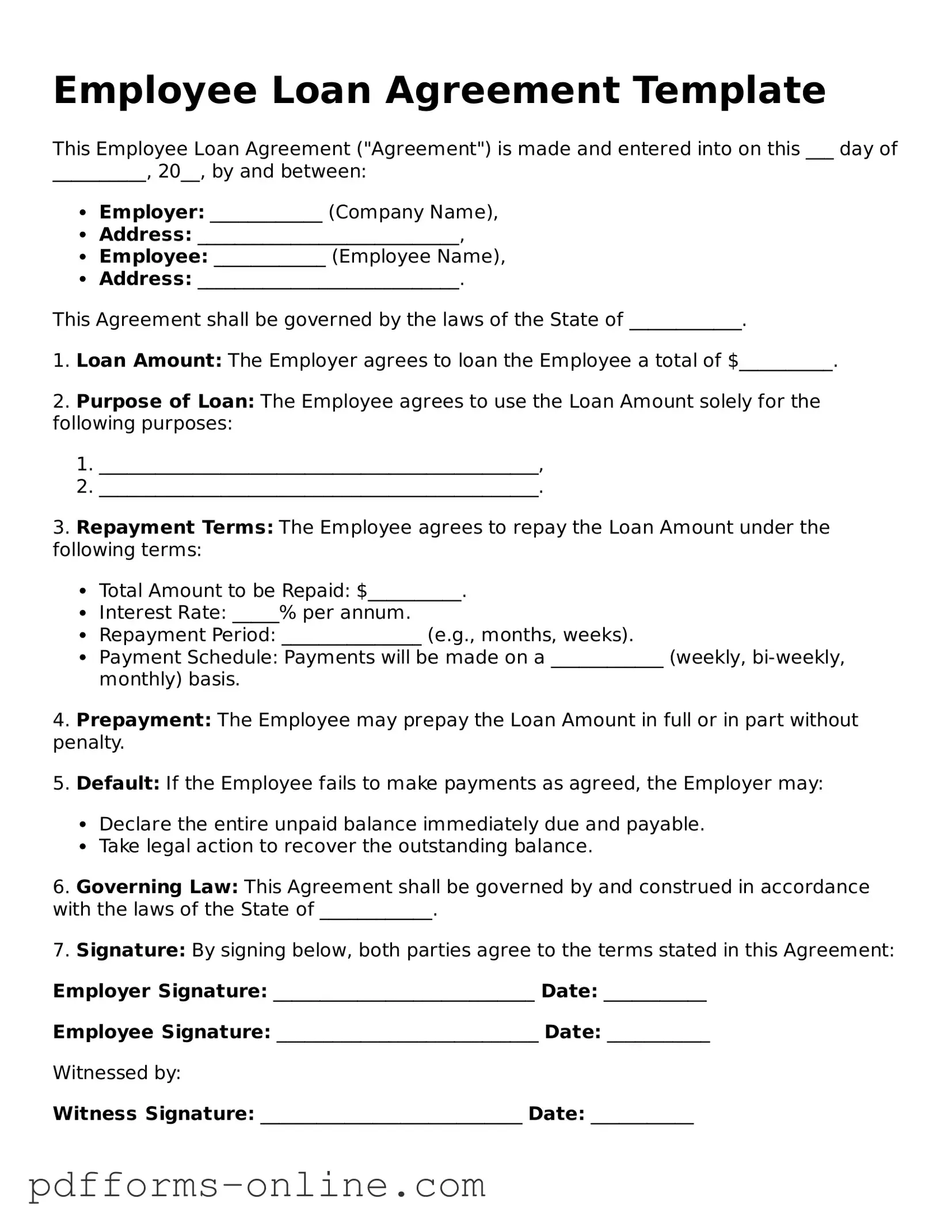The Employee Loan Agreement is similar to a Personal Loan Agreement. Both documents outline the terms of a loan between a lender and a borrower. They specify the amount borrowed, interest rates, repayment schedules, and any penalties for late payments. Personal Loan Agreements are typically used for loans between individuals or financial institutions, while the Employee Loan Agreement is specifically tailored for loans between an employer and an employee.
Another document that resembles the Employee Loan Agreement is the Promissory Note. This is a legal document in which the borrower promises to pay back the loan under specific terms. Like the Employee Loan Agreement, a Promissory Note includes details such as the loan amount, interest rate, and repayment schedule. However, a Promissory Note is often more straightforward and may not include the employer-employee relationship aspect found in an Employee Loan Agreement.
In navigating the various financial agreements within employment, it is essential to consider relevant forms, such as the Employee Loan Agreement, which outlines the specific terms unique to borrower and lender relationships in a workplace setting. Additionally, for those seeking comprehensive documentation related to these agreements, resources like All California Forms offer valuable templates and insights to ensure clarity and compliance in all financial dealings.
The Loan Repayment Plan is also similar to the Employee Loan Agreement. This document outlines the schedule and terms for repaying a loan. It details how much the borrower needs to pay each month and when payments are due. While the Employee Loan Agreement focuses on the initial loan terms, the Loan Repayment Plan provides a clear roadmap for fulfilling those terms.
A Credit Agreement shares similarities with the Employee Loan Agreement as well. This document sets the terms for borrowing money or using credit. Both agreements specify the loan amount, interest rates, and repayment conditions. However, Credit Agreements often involve larger sums and may apply to businesses or individuals seeking credit from financial institutions rather than an employer-employee context.
The Mortgage Agreement is another document that has similarities to the Employee Loan Agreement. Both involve borrowing money with a promise to repay it. A Mortgage Agreement specifically relates to real estate, where the property serves as collateral for the loan. In contrast, the Employee Loan Agreement does not require collateral and is often used for smaller amounts.
The Lease Agreement can also be compared to the Employee Loan Agreement. While primarily used for renting property, a Lease Agreement outlines terms similar to those in a loan agreement, such as payment amounts and schedules. Both documents establish a financial obligation, though the Lease Agreement focuses on rental payments rather than loans.
The Business Loan Agreement is another related document. This agreement is used when a business borrows money from a lender. Like the Employee Loan Agreement, it details the loan amount, interest rates, and repayment terms. However, the Business Loan Agreement typically involves larger sums and different types of collateral compared to loans made to employees.
The Installment Agreement is also comparable to the Employee Loan Agreement. This document allows a borrower to repay a loan in regular installments over time. It includes similar terms regarding the payment schedule and interest rates. Both agreements aim to make repayment manageable for the borrower.
Lastly, the Debt Settlement Agreement bears some resemblance to the Employee Loan Agreement. This document is used when a borrower negotiates a reduced amount to pay off a debt. Both agreements involve financial obligations, but a Debt Settlement Agreement focuses on resolving outstanding debts, while the Employee Loan Agreement establishes the terms for a new loan.
